
This standard applies to protective helmets for industry where the helmet is intended to protect a static user from falling hazards. A series of impact tests must be carried out using a fixed head-form and a falling weight in order for a helmet to meet this standard.
In accordance with EN 397, marking of the helmet should include the year and quarter of manufacture. Period of obsolescence of the helmet and its components must be declared on the User Sheet which is delivered together with the helmet.
All Portwest Helmets Have A Shelf Life Of 7 Years From Manufacturing Date
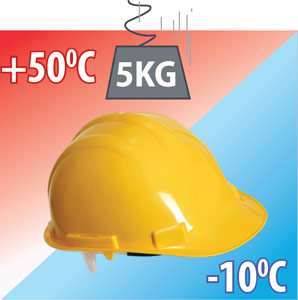
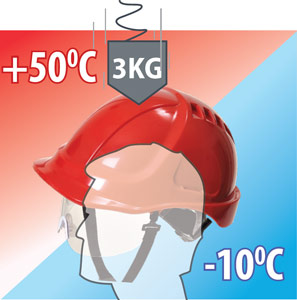
The helmet must not allow more than 5Kn of energy to spread to the head after a fall of a 5kg weight from a 1 meter height. This test is performed at room temperatures of both +50°C and -10°C.
The tip of the test mass used (3kg from 1m height) must not come into contact with the skull. This test is performed at room temperatures of +50°C and –10°C.
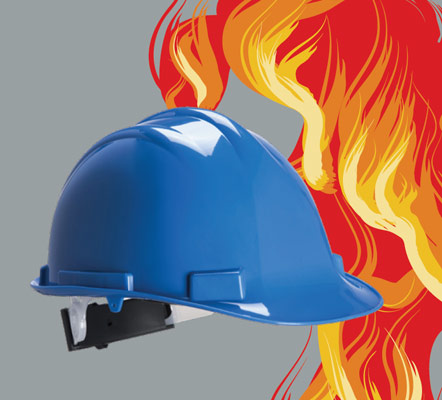
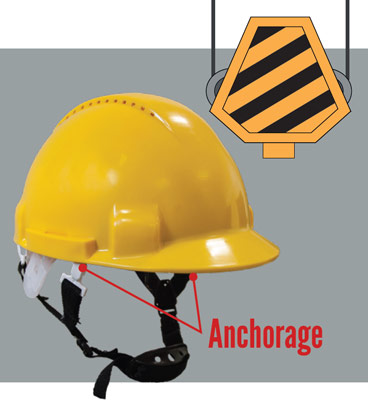
The helmet is exposed to a flame and it must not burn with flame emission more than 5 seconds after removal of the flame source.
Helmets can only protect when retained on the head. EN 397 requires that either the helmet shell or the headband is fitted with a chinstrap or with the means of attaching one, i.e. anchorage points. Chin strap (where present) shall be released at a force between 15kg–25kg (150N–250N) - due to failure of the anchorages only. Test conducted at +50°C after the helmet being submitted to penetration test.
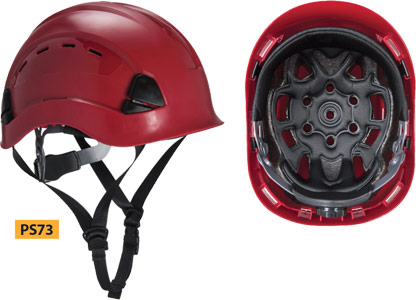
EN 12492 is specifically used within the sporting industry for climbing helmets. Requirements for helmets to conform to the EN 12492 standard has become increasingly popular in the PPE market, as there is no specific technical standard regarding helmets for work at height. EN 12492 offers this protection.
Portwest's Height Endurance Mountaineer Helmet (PS73) fully complies with the EN 12492 (including chin strap requirements) - this helmet is also tested for impact and penetration according to EN397, and for optional requirements of resistance at very low temperatures (-30°C).
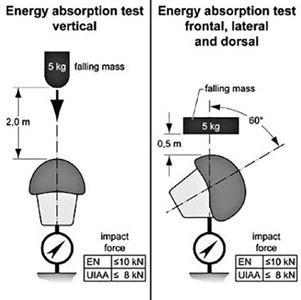
When climbing or working at height, your head can be exposed to more than just top down impacts. In order to combat this the mountaineer standard EN12492 requires additional tests to the front, side and rear of our mountaineering helmets. When testing, the headform is tilted to 30° from the horizontal plane, and 5kg hemispherical and flat strikers are dropped from 2m and 500mm respectively. These tests ensure your head is fully protected from all forces greater than 10kN.
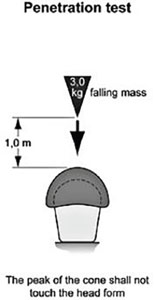
As with industrial helmets and bump caps, mountaineering helmets are intended to provide protection against sharp / pointed objects. The penetration test in EN 12492 is similar to that specified in EN 397, where a 3 kg conical striker is dropped onto the helmet from a height of 1 metre, and any contact between the helmet and headform (although in EN 12492 the headform is in the form of a standard test block) noted. Penetration tests on mountaineering helmets can be carried out on any point around the shell of the helmet, unlike EN 397 where they are restricted to an area at the crown of the head.
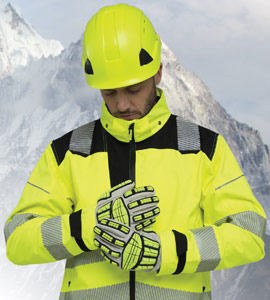
Most specifications for protective helmets include a number of requirements for the design of a helmet in addition to the specific performance requirements. These typically encompass the area of coverage provided by the helmet, as well as the field of vision afforded to the user when worn. They can also cover a number of ergonomics and safety-based requirements, such as clearance between the head and the shell of the helmet (particularly in the case of industrial helmets).
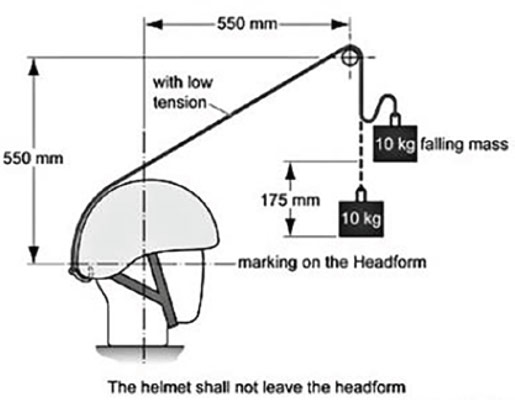
Helmets are subjected to a shock load, applied to the rear or front of the helmet in an attempt to pull the helmet off the headform. This is intended to consider the risk of the helmet catching on an obstacle and being unintentionally pulled off the user’s head. The test load (applied using a 10 kg falling mass) is applied, via a system of pulleys, to the rear of the helmet when mounted on a suitable headform, with the direction of loading following a direction approximately 45° from the horizontal towards the front of the headform (this is occasionally repeated on the front of the helmet). In order to meet the requirements of most protective helmet standards, the helmet must remain on the headform.
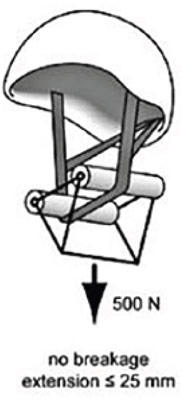
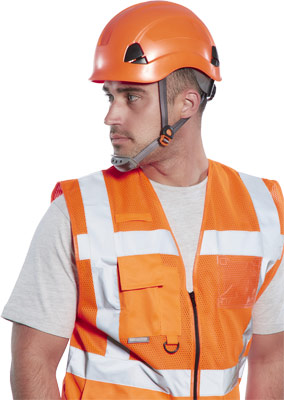
The retention system (in particular, the chin strap) is subjected to a force, applied either statically or dynamically, to ensure the strap is unlikely to fail at the point where it is most necessary. In the case of industrial helmets, it is however desirable that the chin strap will not cause a strangulation hazard, and so cannot be too strong, and therefore straps need to include a break-away element at the anchorages, intended to fail within a specific load range. Typically, the helmet, including chin strap, is fitted to a suitably-sized headform, with the chin strap either fitted to an artificial chin (consisting of two rollers mounted on a frame), where the headform remains static, or to the chin of the headform itself, where the headform is used to dynamically apply the force. The chin strap is then subjected to either a static force (where the artificial chin is slowly loaded until failure) or a dynamic (shock) load, applied using a falling mass, and the amount of stretch in the chin strap is measured.
Meet the multifaceted Portwest Height Endurance Mountaineer Helmet in Royal Blue, the pinnacle of the Height Endurance range, designed with an eye for detail to cater to a range of demanding activities including high-altitude work, rescue operations, and climbing expeditions. Experience unparalleled safety and comfort thanks to its noteworthy features that combine technology with practical design.
Key Features:
Additional Details:
Compliance with Industry Standards:
Choose the Portwest Height Endurance Mountaineer Helmet in Royal Blue for a reliable, comfortable, and technologically advanced solution to safety needs in challenging working environments.
Please see our PPE disclaimer at the bottom of the page.
Specifications are subject to change - See Terms & Conditions for more info
Portwest has been independently rated by Ecovadis for its environmental, social, and ethical performance and achieved a silver rating, meaning they are in the top 25% of globally rated companies.
The pillars taken into consideration include the environment, labour practices and human rights, ethics, and sustainable procurement.
This product conforms with essential health and safety requirements as set out in European Directives.